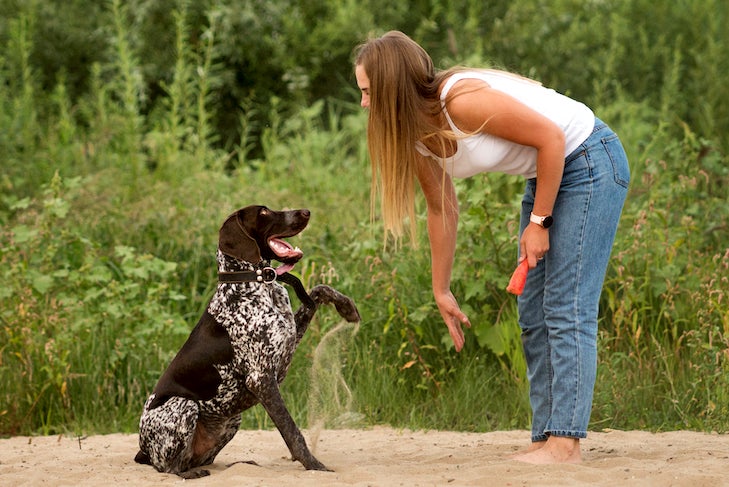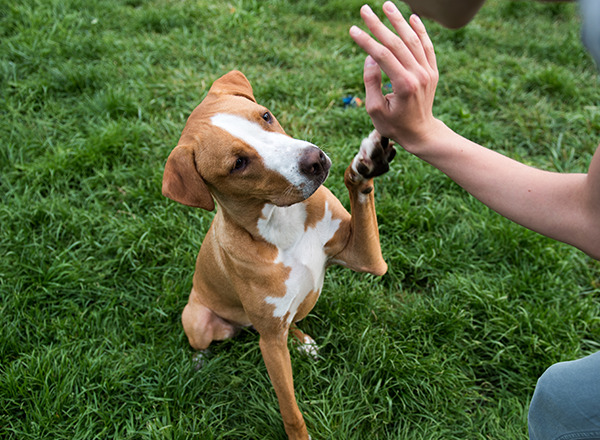Beginner's Guide to Successful Canine Training at Home
Efficiently training a pet dog at home requires a nuanced understanding of canine behavior and reliable communication approaches. Establishing clear training objectives, using high-quality incentives, and maintaining consistency across family participants are essential aspects. Incorporating training right into daily regimens can improve both interaction and retention.
Understanding Pet Dog Behavior
Comprehending canine behavior is vital for reliable training and fostering a harmonious relationship between human beings and their canine buddies. Pet dogs communicate mainly through body language, articulations, and facial expressions, making it vital for owners to translate these signals precisely. Identifying habits such as tail wagging, roaring, or cring can offer understandings into a canine's emotional state and objectives.

Common behavioral concerns, such as aggressiveness, anxiousness, or excessive barking, usually stem from misconceptions or unmet needs. Observing and addressing these issues quickly can avoid rise and make certain a favorable training experience. By cultivating a deep understanding of canine habits, owners can customize their training approaches to match their canine friends, eventually leading to a mannerly and contented animal.
Crucial Training Tools
A fully equipped training room can significantly enhance the efficiency of pet dog training in the house. Essential training tools guarantee that both the dog and the instructor can participate in effective sessions that cultivate knowing and bonding.

Purchasing a durable leash and a comfy, well-fitting collar or harness is important for security and control. These tools aid establish borders and make sure the pet dog remains safe during training. In addition, an assigned training area, free from disturbances, aids focus for both the pet dog and the instructor.
Training aids such as training pads, cones, or agility tools can likewise enhance the experience by introducing range and obstacles. Lastly, having a notebook or digital application for tracking progression can be indispensable, enabling you to note successes and areas for renovation. Making use of these vital devices will create a favorable training atmosphere and lay the structure for effective learning.
Producing a Training Regimen
Developing a consistent training regimen is crucial for reliable pet training at home. A well-structured regular not just helps in strengthening desired behaviors yet likewise gives your pet with a feeling of security and predictability. To create a reliable training regular, start by recognizing particular training goals, such as fundamental commands, leash walking, or house-training.
Select a designated time every day for training sessions, preferably when your canine is sharp and receptive. Procedure should be brief, approximately 5 to 15 minutes, to maintain focus and stop tiredness. Uniformity in timing and atmosphere my explanation will certainly improve your pet dog's understanding experience.
Integrate training right into daily activities to strengthen skills. Method commands during walks or nourishment, which integrates learning into all-natural regimens. Additionally, continue to be flexible and change the regular as essential, suiting your dog's power degrees and state of mind.
Favorable Reinforcement Methods
Favorable support strategies are basic to effective dog training, promoting desired actions with rewards as opposed to punishment. This approach uses positive stimuli, such as treats, praise, or playtime, to encourage pets to duplicate details actions. The keystone of this technique is timing; incentives should be offered right away adhering to the preferred habits to develop a clear organization.
When executing positive reinforcement, it is necessary to pick rewards that are inspiring for your pet dog. High-value treats, such as small pieces of chicken or cheese, can be particularly efficient during training sessions. In addition, differing the rewards can preserve your canine's rate of interest and excitement.
Begin with basic commands, like "rest" or "remain," and progressively progress to more intricate tasks. Consistency is crucial; guarantee that all relative make use of the same commands and benefit systems to avoid confusion.
In addition, it is important to continue to be client and prevent stress. Pets, like people, find out at their own rate. By fostering an encouraging training atmosphere with favorable reinforcement, you can boost your canine's understanding experience while strengthening the bond between you and your hairy buddy, preparing for successful training outcomes.
Common Educating Obstacles
While educating a dog at home can be a fulfilling experience, it this article typically features a collection of usual obstacles that can test both persistence and consistency. One widespread concern is disturbance. Pets might come to be quickly sidetracked by sounds, movements, and even scents in their setting, making it tough to maintain their focus during training sessions.
One more difficulty is incongruity in commands and reinforcement. It can prevent and confuse the canine progress if family participants make use of various signs or incentives. Developing a unified technique is essential for effective communication.
Additionally, pets can experience disappointment or anxiety, particularly if they do Discover More not recognize what is anticipated of them. This can result in undesirable actions, such as barking or chewing.
Lastly, the timing of support is vital (Dog training). Delayed rewards can lessen the performance of favorable reinforcement, as dogs might stop working to attach the actions with the incentive
Getting over these difficulties needs commitment, clear interaction, and an organized training plan. Identifying and attending to these usual challenges will lead the way for a more effective and satisfying training experience at home.
Conclusion
To conclude, successful pet training at home requires an extensive understanding of canine actions and efficient interaction methods. By establishing clear training objectives and using high-grade deals with together with positive support, the training process becomes a lot more satisfying for both the dog and the trainer. Flexibility, uniformity, and persistence are vital elements that help with understanding. Eventually, integrating training into everyday routines boosts the bond in between dog and owner, making the experience both effective and delightful.
Developing a regular training routine is crucial for reliable pet dog training at home.Positive reinforcement methods are essential to reliable pet training, promoting preferred habits with incentives rather than punishment (Dog training). By fostering a helpful training environment via favorable reinforcement, you can improve your pet's knowing experience while strengthening the bond in between you and your fuzzy friend, laying the groundwork for effective training end results
In verdict, successful dog training at home demands a thorough understanding of canine behavior and reliable communication strategies. By developing clear training goals and making use of high-grade treats alongside favorable reinforcement, the training process comes to be much more gratifying for both the instructor and the pet.